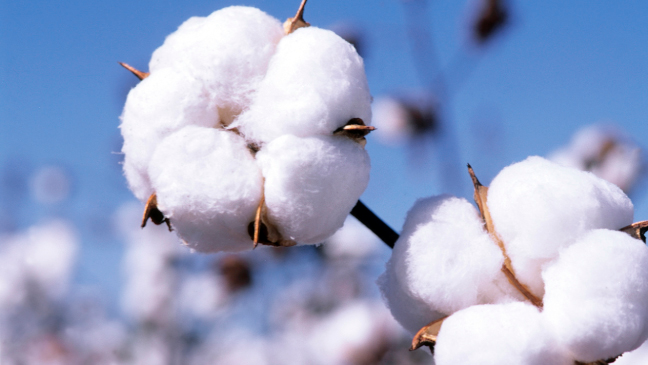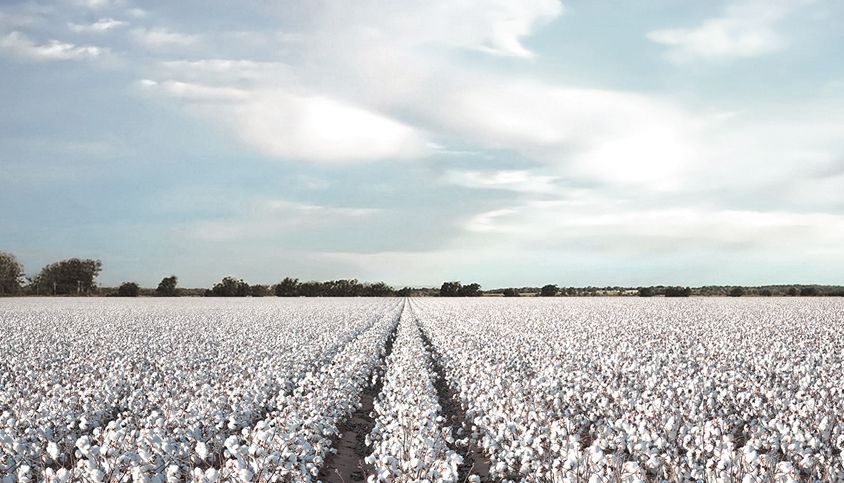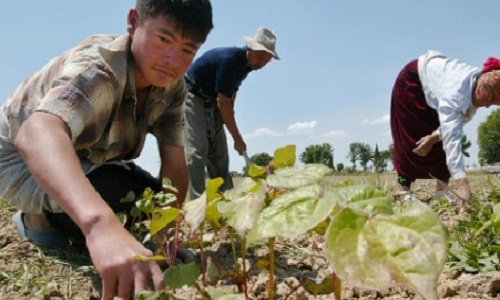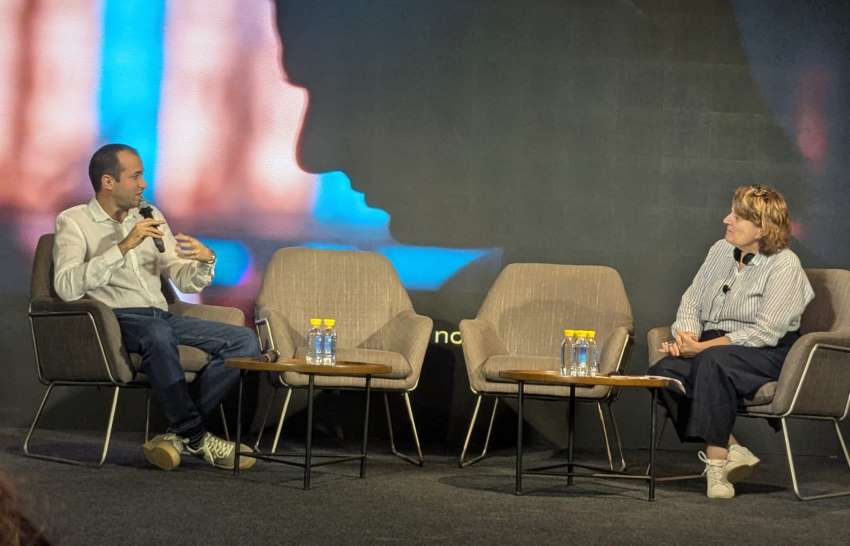FW
Turkey and Vietnam are two of the biggest buyers of US cotton. The importance of China as a shipping destination has slipped, but China will continue to rank in the top five US customers.
China will continue to require high qualities from the US to mix with their local cotton in an attempt to produce a marketable yarn. Adding to that need is the ongoing weather problem facing the Chinese 2015 crop that has created yield and quality losses – making the Chinese depend on the US.
To date, the US has harvested some 5,00,000 bales of high quality cotton, and about 3,50,000 bales of this have been sold. The real troublesome note for the market has been that it has not been able to hold any daily highs, even with prices so near the contract lows. While not truly challenging contract lows, far too much trading has occurred near the lows, as if there is not any upside potential for cotton.
There is a very thin level of overhead price resistance. Cotton remains seven to ten cents underpriced. Hand-to-mouth buying has served the mills well for two years. World production of cotton faces a cut of a much as three million before the year is completed.
The Partnership for Sustainable Textiles—An Opportunity for Global Supply Chains was organised by FICCI in association with Konrad-Adenauer-Stiftung (KAS), on October 5, 2015 at Federation House.
Hans-Joachim Fuchtel, Parliamentary State Secretary, Ministry for Economic Cooperation and Development, of the Federal Republic of Germany and Chairman of the Board of Governors of the Asian Development Bank addressed the discussion. The objective was to provide profit to the Indian textile and garment industries. The discussion aimed at bringing about continuous improvement of social, ecological and economic sustainability along the entire textile chain.
Fuchtel said that given that globally, India is the second biggest producer of cotton and for processing of textiles and garments, the Indian textile and garment industries are of great importance at all levels of the value chain.
Improvisation of conditions along the complete textile value chain is the aim of Germany's partnership for sustainable textiles. More than 150 member organizations are part of the alliance and at present it covers about 45 per cent of the German textile retail industry and aims at a long-term market coverage of 75 per cent.
The aim of the partnership is to bring about continuous improvement of social, ecological and economic sustainability along the entire textile chain. Immediate Past President, FICCI, Sidharth Birla, said that the Indian textiles sector is dependent on exports in a major way. Annually, India exports over $1.8 billion of textiles and textile items to Germany at present. Hence, it is important that the Indian textile industry gets integrated in the global supply chain. Birla added that today, the world is fast moving towards sustainable solutions and sustainable supply chain and Germany is the global leader in such sustainable and smart solutions.
www.ficci.com

Hemp makes a comeback

One of the oldest cultivated crops, hemp has a rich and colourful history from cloth, paper, food, to building materials, fuel, plastic, etc. Canada has fully embraced the recent demand for hemp. It grows almost $1 billion worth of hemp per annum, which equates to $250 net profit for each acre. It can be compared to soy, which is the US version of a major crop, which averaged around $71 per acre last year.
A report in Los Angeles Times says American demand for omega-balanced hempseed oil majorly caused Canada’s windfall. However, hemp is also a go-to material for dozens of applications all over the world. US still lags behind while Canada reaps the financial benefits of the plant. President Obama removed it from the Controlled Substances Act last year— as long as it was used for agricultural research. This was in step towards legalising hemp for industrial uses. A few states though, are weary of the slow pace of the Feds and are taking decisions on their own, by passing legislation to import hemp seed for pilot programmes. However, the DEA has been slow in reading the memo.
The agency seized a 286-pound shipment of Italian hemp seed bound for Kentucky’s state agriculture department in May last year. According to the Los Angles Times, after a weeklong standoff, the Federal Agency had to be reminded by the federal courts that the law had changed and Kentucky’s seed imports were legal.
However, one of the most desperately needed uses for the plant involves the creation of durable and eco-friendly fabric—especially considering the damaging effects of conventional cotton production. This means, cotton riddled with pesticides is an ecological and health threat. The crops need load of irrigation and is largely grown in dry regions of the world where water is scarce, such as Egypt, China’s Xinjiang province, California and Texas.
Cotton’s devastating impact
Aral Sea and Central Asia are classic examples of the devastating effects of the crop. Besides, farmers are using more water in their fields to combat rising level of water and soil salinity in the area, which adds to the problem. It takes 1,800 gallons of water to grow enough cotton for one pair of blue jeans on an average. Apart from water consumption, use of pesticide is also high in conventional cotton, thus harming and killing countless farm-workers around the world each year.
Hemp on the other hand, stands out over cotton, when it comes to environmental and health impacts. Hemp produces up to three times the amount of usable plant material per acre than cotton and it also requires very little pesticide or fertiliser as it can grow in a variety of conditions/soils.
Water use for hemp is about half of what is required for cotton and hemp actually enhances soil as with long roots up to six feet deep, the plant aerates and breaks up soil. Besides, it also helps to clean soil contaminated with heavy metals, solvents, pesticides and gasoline. Hemp has 3-8 times the tensile strength of cotton, and four times the warmth and absorbency, making it exceptionally durable. It also breathes and wicks moisture away from the skin more efficiently than cotton.
On Monday evening, October 5, 2015, Textile Exchange’s Textile Sustainability Conference kicked-off with a cocktail reception and launch of the partnership between the event’s title sponsor, C&A Foundation and WWF’s Conservation through Cotton project in Mumbai.
The line-up to follow will consist of breakout discussions with topics including: animal welfare, cellulosic materials, government regulations and a round session of interactive networking in the form of speed dating for buyers and sellers. The closer for the first full day of the conference will be a thematic fashion show and networking dinner, hosted by Pratibha Syntex.
The event discussion can be followed on social media by searching #TExtileConf. Additional information is made available at Etouches.com/textileconf. Textile Exchange (TE), founded in 2002, is a global nonprofit organization that works closely with all sectors of the textile supply chain to find the best ways to minimise and even reverse the negative impacts on water, soil, air and human population created by this $1.7 trillion industry. TE accomplishes this by providing the knowledge and tools this industry needs to make significant improvements in three core areas: materials, integrity and supply chain.
</br>On Monday evening, October 5, 2015, Textile Exchange’s Textile Sustainability Conference kicked-off with a cocktail reception and launch of the partnership between the event’s title sponsor, C&A Foundation and WWF’s Conservation through Cotton project in Mumbai.</br>
</br>The line-up to follow will consist of breakout discussions with topics including: animal welfare, cellulosic materials, government regulations and a round session of interactive networking in the form of speed dating for buyers and sellers. The closer for the first full day of the conference will be a thematic fashion show and networking dinner, hosted by Pratibha Syntex. </br>
</br> The event discussion can be followed on social media by searching #TExtileConf. Additional information is made available at Etouches.com/textileconf. Textile Exchange (TE), founded in 2002, is a global nonprofit organization that works closely with all sectors of the textile supply chain to find the best ways to minimise and even reverse the negative impacts on water, soil, air and human population created by this $1.7 trillion industry. TE accomplishes this by providing the knowledge and tools this industry needs to make significant improvements in three core areas: materials, integrity and supply chain. </br>
www.textileexchange.org
India has beaten China to become the world’s largest cotton producer in 2014/15. And the gap in production is set to widen considerably. Despite a projected two per cent decline in India’s output in 20151-6 from a year earlier, thanks to a deficient monsoon, the country’s share in global cotton production is set to rise to 27 per cent from almost 25 per cent in 2014-15. However, higher output doesn’t mask the stark reality that India’s cotton yield is just above a third of China’s and much lower than the global average.
Experts fear the surplus local production in 2015-16 could worsen a domestic glut and further dent local prices, as exports have plunged. Exports of cotton may remain negligible in 2015-16 owing to a massive fall in purchases by China, which typically accounted for over 70 per cent of India’s outbound shipments of the fiber.
China, the world’s largest cotton consumer as well as importer, has been attempting to move away from labor-intensive sectors like garments to more capital-intensive ones. The country has been offloading stocks from its huge reserves and also trimming subsidy support to cotton farmers for over a year now as wage costs have been soaring.
The 41st India Knit Fair showcasing collections for Autumn/Winter 2015 and summer 2016 concluded on October 9, 2015 at IKFA Complex, Tirupur, India. Participants displayed their innovative collections including pullovers, cardigans, dresses, skirts, hooded T-shirts, shorts, pajamas, blouses, golfing Polo shirts, underwear, boxers shorts, nightwear, leggings, sweatshirts, bustier sets, washed look garments, jogging suits, swimwear, track suits and so on apart from an extensive collection of cotton blended garments for men, women, children and babies.
Tirupur is known as knitwear town and is just 38 km away from the Coimbatore Airport. The 42nd edition of India Knit Fair will return from May 11 to 13, 2016.
Cotton farmers in deep financial distress expressed their ire against Union Minister of State for Textiles, Santosh Kumar Gangwar recently, at a meeting organised by the BJP. Bandaru Dattatreya, Labour Minister and the Union Minister attended this meeting.
Gangwar was about to make his remarks after listening to several farmers, when they vociferously demanded a price of Rs 5,000 a quintal for their produce. They also wanted the government to direct the Cotton Corporation of India (CCI) to procure the produce the same day.
The minister, amidst the chaos, expressed his concern and said that he understood their distress and anger and assured the farmers that he would discuss the issue with the Prime Minister. He said the acreage in Telangana had gone up though it saw a drop in the other cotton-growing states. He assured that a redressal centre would be opened in Mumbai soon to let the farmers convey their grievances. However, Shankar, a farmer from Adilabad district, said that the minimum support price of Rs 4,100 a quintal was not in the least viable and that the Centre should do something about this and both the Central and state governments should offer Rs 5,000 per qintal.
Another farmer from the district, Sampath Rao, expressed his anger at the government for hiking the MSP by just one per cent, while the salaries for employees are hiked by 30 per cent. Farmers also raised other issues like unreasonable delay in procurement by CCI at the market yards, forcing farmers to spend additional amount on tractor rentals.
Cotcorp.gov.in

Forced labour, a norm
entrenched Both countries’ economies have deeply forced labour production systems. It works like this—the
It works like this—the
|
|
state owns most of the land, leases it to the farmers and imposes cotton production quota. If the annual quota is not met, it results in punishment, public humiliation or even loss of land.
The governments also deliberately set the procurement price of cotton lower than the cost of production. Besides, the governments have monopolies over everything; they buy and sell all the cotton and in turn make huge profits, but not for the benefit of the people but for the profit of corrupt private elites.
The pickers are recruited mainly from civil services; there are teachers, doctors, nurses and local administration employees who leave their regular jobs to work in the fields for a few weeks. The conditions they stay in are dismal—they often sleep in barracks without running water or basic sanitary equipment, work long hours daily to fulfil the government imposed cotton quotas of cotton. They face losing their jobs or regular harassment in their workplaces, if they refuse or fail to meet the quotas.
Yet, multinational companies and western governments continue to trade in Uzbek and Turkmen cotton, and promote business and investment in both countries, or precluded large World Bank investments in Uzbekistan.
One of the world's most oppressive regimes is Turkmenistan, which remains completely closed to any international scrutiny as there is no free media and human rights defenders face severe repression. Nothing seems to change for this year’s cotton harvest too.
A ray of hope
Uzbekistan, though, seems to be making progress. In April 2014 the country’s government committed to working with the International Labor Organization to eradicate forced labour. However, this action was not full-fledged, as the number of children in picking cotton in the fields reduced dramatically since 2012, the general system of forced labour remains intact.
The Uzbek government has changed its tactics and employed adults in place of children, thus not complying with national and international laws. If this was a ploy, it seemed to have worked, as few children in the fields and apparent openness to engagement won the government some praise from the international community. Finally, this year, the U.S. Department of State upgraded Uzbekistan in its Trafficking in Persons Report.
According to the Cotton Campaign, a coalition of human rights groups dedicated to ending forced labour in cotton production in Uzbekistan and Turkmenistan, of which Anti-Slavery International is a member, the police have assaulted have assaulted Elena Urlaeva, one of the most prominent Uzbek human rights defenders, for attempts to document forced labour in weeding the cotton fields and for disseminating leaflets with information about Uzbek laws prohibiting forced labour. This shows that the government is pulling all stops in any efforts to document the ground realities.
Though there is increasing demand since the last ten years for a change in Uzbekistan, the value of the trade to several international businesses means their governments are unlikely to maintain the pressure once some token concessions have been made by the Uzbek government. Therefore, the onus lies on the consumers-voters to urge the government to be strict with those that continue this slavery.
The textile and garment industry in Nigeria has been affected by the influx of cheap textile materials, inconsistent government policies and dumping of sub-standard textile materials in the country. The textile industry had about 170 mills in the 70s and 80s. Now it has come down to 34.
Smuggled goods come into the country without paying duty. Counterfeits and fake products pose a problem. Consumers take these to be Nigerian products while they are actually substandard products from Asia. Textile manufacturers say the challenge they face is not funding but the right to be able to compete globally.
Nigeria used to supply 18 per cent of the world’s requirement of cotton. Although the government has always promised to encourage local production, lack of an effective policy mechanism has hindered the actualisation of this intention. The textile industry feels sales would improve if it is allowed to make and sell defense and paramilitary uniforms.
The country has not really benefitted from the African Growth and Opportunity Act (AGOA). The purpose of the act was to give countries in sub Saharan Africa preferential trade access to the US market and as a catalyst for their economic growth. But freight and container charges through the Indian and the Pacific Oceans were too high for Nigerian entrepreneurs.
Trade.gov
India's exports still have a ray of hope with the possibility of a rebound in coming months despite a negative growth trajectory for nine months, from December 2014 to August 2015. Indian exports registered negative growth in 68 of the top 100 export destinations ranging from 10 per cent to 50 per cent.
All top 10 export destinations of posted negative growth: Saudi Arabia (minus 49.7 per cent), Singapore (minus 30.70 per cent), China (minus 20 per cent), Bangladesh (minus 16.4 per cent), Germany (minus 10.3 per cent), Hong Kong (minus 6.4 per cent), UAE (minus 4.8 per cent), Sri Lanka (minus 4.73 per cent), Britain (minus 3.83 per cent) and US (minus 3.82 per cent).
However, 32 of the top 100 destinations: Australia, Canada, Norway, Bahrain, Iraq, Czech Republic, Chile, Ghana and Afghanistan, among others, witnessed growth ranging between two per cent to 50 per cent. Exports constituting labour intensive products demonstrated positive growth. These included handicrafts, jute, ceramic products, carpets, tea, readymade garments and spices.
Experts say that the government should focus on encouraging exporters to venture into new countries and should launch information portals for providing comprehensive information about export opportunities in various markets.












